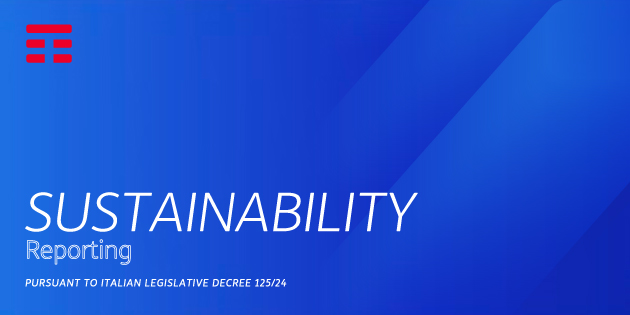Errata corrige published on March 3, 2022 at 11:20 am
- THE BOARD OF DIRECTORS APPROVED THE 2022-2024 INDUSTRIAL PLAN, WHICH LAUNCHES A TRANSFORMATION PATH BASED ON THE CREATION OF DISTINCT LEGAL ENTITIES, NETCO AND SERVCO (CONSUMER, ENTERPRISE AND TIM BRASIL), MOVING BEYOND THE VERTICAL INTEGRATION MODEL
- MANDATED THE CHIEF EXECUTIVE OFFICER TO DEVELOP THE EXECUTION PLAN OF THE REORGANIZATION TO BE PRESENTED BEFORE HALF YEAR RESULTS. THIS PROJECT WILL UNLOCK THE INTRINSIC VALUE OF GROUP ASSETS
- SERVICE REVENUES, WITH THE CURRENT CONFIGURATION, ARE EXPECTED TO GROW SLIGHTLY AND EBITDA IS EXPECTED TO STABILIZE OVER THE PERIOD 2022-2024
- TIM BRAZIL ACCELERATES ITS GROWTH PATH THANKS TO THE SYNERGIES AND THE FULL INTEGRATION OF OI'S MOBILE ASSETS
- ADVISORS’ ASSESSMENT OF KKR'S EXPRESSION OF INTEREST WILL BE FINALIZED SHORTLY, BOARD’S DECISION TO FOLLOW
- STRONG ATTENTION ON COST SAVINGS IN A FRAMEWORK OF EMPLOYMENT SAFEGUARDING
- NEW ESG TARGETS DEFINED: INTRODUCED TARGETS RELATED TO CIRCULAR ECONOMY, GENDER EQUALITY, DISSEMINATION OF DIGITAL SERVICES AND ZERO NET EMISSIONS BY 2040
TIM’s Board of Directors, which met today chaired by Salvatore Rossi, unanimously approved the 2022-2024 Industrial Plan presented by Pietro Labriola, Chief Executive Officer and General Manager, who was given the mandate to prepare the execution plan of the reorganization which, once approved by the Board, will be presented to the market at TIM’s Capital Market Day before half year results.
The strategy outlined stems from the awareness that the Group consists of a set of highly valuable assets operating in an improving economic context but in an intensely competitive market, constrained by one of the most stringent regulatory frameworks in Europe.
In this scenario TIM intends to accelerate infrastructure assets’ development (fiber in the fixed network and 5G in mobile) and new businesses’ growth, reaping the benefits of the funds available under the NRRP and others.
The new plan aims to create a new TIM with solid industrial and technological foundations, able to move more rapidly towards a sustainable cash flow generation, also thanks to the overcoming of the current vertical integration model.
Pietro Labriola, TIM’s Chief Executive Officer and General Manager commented: “I am convinced that the evolution we have planned for the Group is a positive break with the past. We are playing a front-runner role in the Telco sector and expect others to follow our example. The projects we plan to launch for customers and those envisaged by the Digital Agenda and the NRRP require an immediate and strong response: with this new set-up we will be readier to meet the challenges and to seize opportunities ahead”.
Along with a plan based on the existing organisation and business model, an optimised corporate configuration has been defined that consists of specific legal entities. The new set-up will improve visibility of the operational and financial performance of each component and will expand the range of strategic options that TIM can exploit in the interest of all stakeholders, with the possibility of attracting new partners and new financial investors. The impact of costs required to achieve full separation is estimated to be very small, as most of the investments have already been incurred as a result of the implementation of the “Equivalence of Input”, “Equivalence of Output” and the FiberCop separation.
- ServCo: Mobile network assets, service platforms and data centers, divided into:
- Enterprise - Business activities in the Enterprise market integrated by the digital companies Noovle, Olivetti and Telsy;
TIM, leveraging its leadership position in the Public Administration and large customers and its unique and distinctive end-to-end selling proposition, aims to increase its share in a growing market thanks to the push towards digital services: Cloud (market growing at an annual rate of 15%), IoT (+10%) and Cybersecurity (+10%). A "Tech-company" approach, increasingly integrated, also as an organisation: a "one-stop-shop" that will fully exploit the Group’s unique skills and assets, also taking up the opportunities provided by the NRRP, including the realisation of the National Strategic Hub (Cloud for Public Administration);
- Consumer - Business activities in the Consumer and SME (Small and Medium Business) retail market
In the context of ultrabroadband growth, the plan envisages strengthening of TIM's premium position, refocusing of sales channels on core business and protection of the existing customer base. Focus on convergence will continue, working on improving margins and the opportunities offered by the voucher program, also in terms of technological upgrades;
- TIM Brasil
The company continues to focus on a value strategy and will enjoy additional growth boost from the integration of Oi's assets, continuing on its path towards a ‘Next Gen Telco’.
- NetCo: Fixed network assets, wholesale domestic and Sparkle's international businesses.
TIM's strategic priority in the domestic wholesale market, which is expected to grow slightly in terms of access lines over the plan period, is to migrate lines to FTTH technology associated with an ambitious coverage plan, centred on the model of co-investment, and an expansion of the portfolio of services offered.
Starting from 94% FTTC coverage, TIM Group plans to accelerate FTTH roll out, reaching 60% of technical technical units nationwide by 2026, with an increase of about 3 percentage points over the previous target (without taking into account the expected effect of the participation in the “Italia 1 Giga” tender for the public funding of new 1Gbit/s infrastructure).
In the light of this acceleration in fibre coverage on the domestic market, 2022 will see a peak in investment, followed by a gradual reduction to a level of less than 15% of revenues in the medium term.
NetCo will be able to compete more effectively in the wholesale market and take advantage of new opportunities, including the greater regulatory flexibility provided by the Electronic Communications Code to wholesale pure-players. ServCo’s retail activities are also expected to benefit from this scenario.
On the organisational front, the new model based on agile working will be accompanied by a three-year plan for personnel management which, in line with previous years, will provide incentives for voluntary redundancies and early retirement and apply instruments to ensure employment.
The plan further strengthens TIM’s commitment to sustainability. New and more ambitious circular economy, digital growth, gender equality and ESG governance targets have been introduced. The Company has set a goal of zero net emissions by 2040 and confirmed its 2030 carbon neutrality target.
With the finalization of TIM’s industrial plan, the Board of Directors’ financial and legal advisors have received the relevant elements needed to asses KKR’s indicative and non-binding Expression of Interest. This analysis will be completed in a timely manner. Once completed, the Board will meet to review the respective findings and to decide on the next steps in this regard.
Financial targets for the 2022-2024 plan with the current organisational and business model (IFRS 16/After Lease):
- Group revenues from services are expected to grow slightly over the plan period (low single digit CAGR '21-'24 growth, with 2022 low single digit decrease);
- Group organic EBITDA is expected to be stable over the plan period (CAGR '21-'24 flat, with 2022 low teen decrease);
- Group organic EBITDA After Lease is expected to decline slightly (low single digit CAGR '21-'24 decrease with 2022 mid to high teens decrease: the acquisition of Oi assets will impact lease payments over the plan period and this impact will only be absorbed after the plan);
- Group Capex is expected to be around 4.0 billion euros in 2022, about 3.9 billion euros in 2023 and about 3.8 billion euros in 2024;
- Domestic Capex below 15% of revenues in the medium to long term;
- Group net debt 2022 will be impacted by non-recurring payments totalling 3.7 billion euros, specifically for the purchase of the spectrum in Italy and Brazil and the acquisition of Oi's assets, the impact of which on leverage will be fully absorbed by 2025.
Errata corrige pubblished on March 3 2022, replaces the press release issued on March 2 2022, at 9.59 pm.
Rome, 2 March 2022



